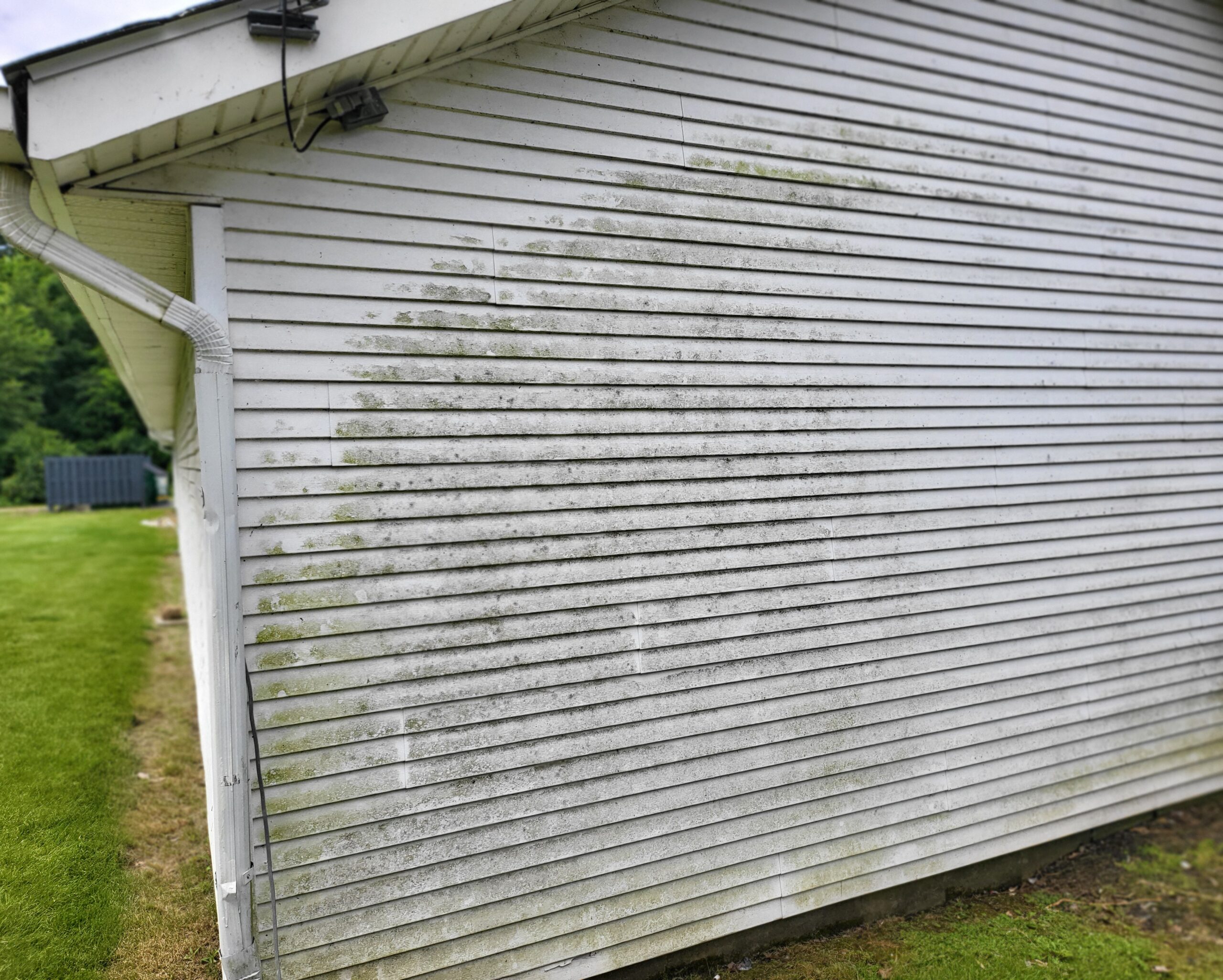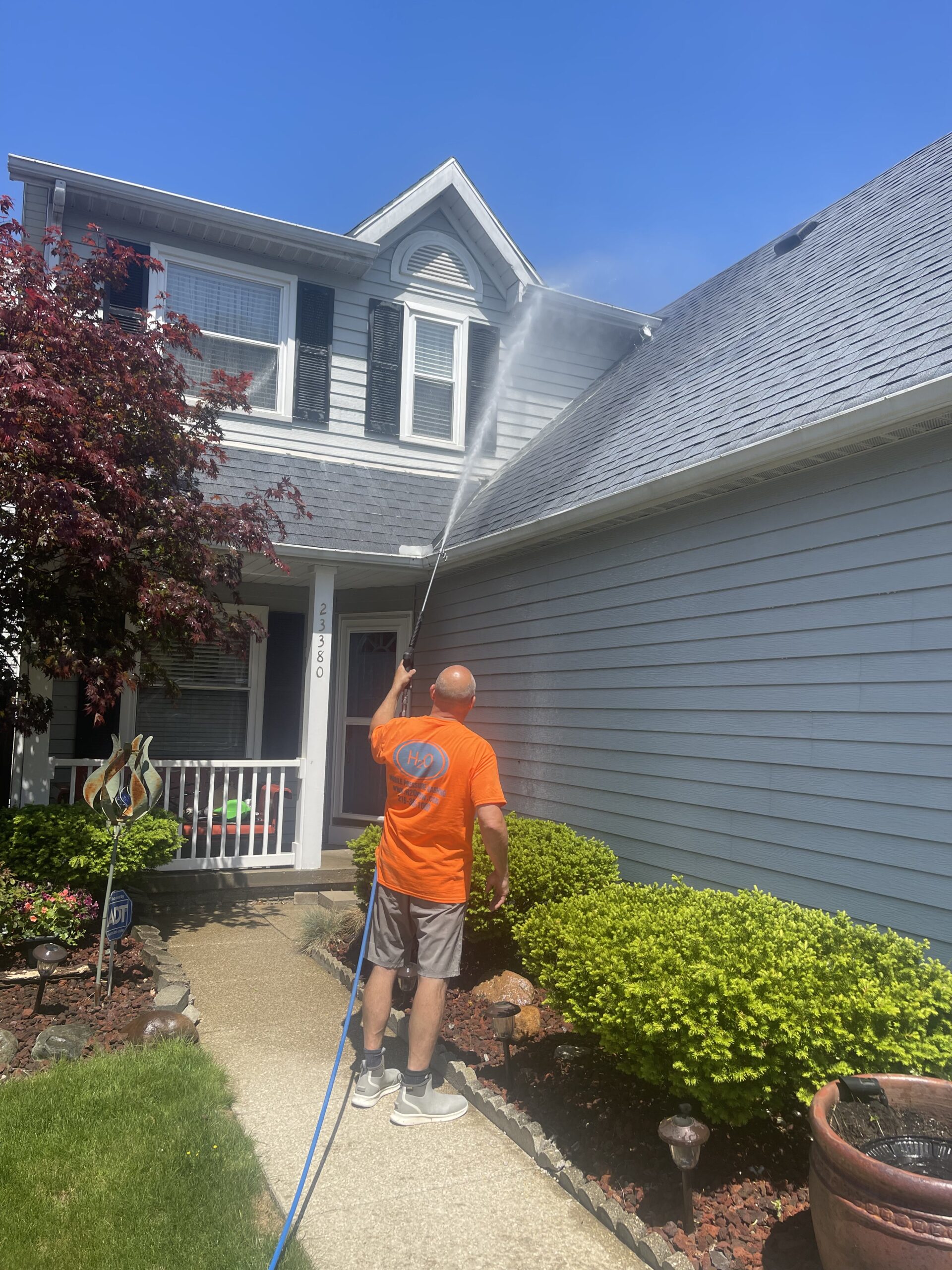
Mold is a common problem that affects many households, but it has become increasingly problematic in recent years. This post will explore the mold cycle, how changing environmental conditions have accelerated mold growth in homes compared to 20 years ago, and practical solutions like pressure washing to mitigate the problem. By understanding these factors, homeowners can better protect their properties from mold and its associated risks.
What is the Mold Cycle?
The mold cycle consists of several stages that contribute to mold growth and proliferation. Mold spores are omnipresent, floating through the air and settling on surfaces. For mold to grow, it requires three key elements: moisture, a food source (like wood, drywall, or fabric), and the right temperature.
Stages of the Mold Cycle:
- Spore Dispersal: Mold spores are released into the air and can travel significant distances. They can enter homes through open doors, windows, or ventilation systems.
- Germination: When spores land on a suitable surface with sufficient moisture, they can germinate and begin to grow. This process can happen in as little as 24 to 48 hours under ideal conditions.
- Colonization: As the mold grows, it forms colonies that can spread quickly. The mycelium (the root-like structure of mold) can penetrate porous materials, making it difficult to eradicate.
- Reproduction: Once a colony has established itself, it reproduces by releasing new spores into the environment, continuing the cycle.
Conditions Favoring Mold Growth
Mold thrives in warm, damp environments. Here are the specific conditions that promote mold growth:
- Humidity: High humidity levels (above 60%) provide the moisture mold needs to thrive.
- Temperature: Mold grows best at temperatures between 60°F and 80°F (15°C and 27°C).
- Nutrient-Rich Materials: Mold feeds on organic materials, including wood, paper, and fabric.
How the Mold Cycle Has Changed Over the Past 20 Years

Increased Humidity and Temperature
Recent years have seen a notable increase in humidity and temperature in many regions due to climate change. According to the National Oceanic and Atmospheric Administration (NOAA), average temperatures in the United States have risen by approximately 1.8°F since 1901, with significant increases occurring in the last two decadestemperatures lead to increased evaporation and humidity, creating an environment where mold can flourish.
Building Materials and Practices
Twenty years ago, homes were often built with different materials and techniques compared to today. Modern construction practices frequently use materials like engineered wood and fiberglass insulation, which can retain moisture more readily than traditional materials. These newer materials can create favorable conditions for mold growth, particularly if the home is not adequately ventilated.
Increased Use of HVAC Systems
While heating, ventilation, and air conditioning (HVAC) systems have made indoor environments more comfortable, they can also contribute to mold growth if not properly maintained. Condensation can build up in ducts and on cooling coils, providing a perfect breeding ground for mold spores. Twenty years ago, many homes lacked centralized HVAC systems, which has changed the dynamics of indoor air quality .
Awareness
There is now greater awareness of mold and its potential health effects, including respiratory problems, allergies, and skin irritations. However, despite this awareness, many homeowners remain uneducated about prevention strategies. This gap in knowledge can lead to prolonged exposure to mold, exacerbating health issues.
How Pressure Washing Can Help

Pressure washing is an effective method for removing mold, mildew, and dirt from the exterior of homes. Here’s how pressure washing works and its benefits:
How Pressure Washing Works
Pressure washing involves using a high-pressure water spray to clean surfaces. It can effectively remove mold and mildew from various materials, including:
- Wood: Pressure washing can clean decks, siding, and fences, removing mold spores that can damage the wood and affect its longevity.
- Concrete: Driveways, walkways, and patios can accumulate mold and grime over time. Pressure washing can restore their appearance and reduce mold growth.
- Roofing: Moss and algae can thrive on roofs, leading to damage over time. Pressure washing can remove these harmful organisms, prolonging the life of the roof.
Benefits of Pressure Washing
- Prevention: Regular pressure washing can prevent mold growth by removing spores before they can establish a colony. This proactive approach is especially important in humid climates.
- Aesthetic Improvement: A clean exterior enhances curb appeal and can increase property value. Homebuyers often shy away from homes with visible mold or mildew.
- Health Benefits: Reducing mold and mildew on surfaces can improve indoor air quality, minimizing health risks for occupants .
- *Cost-Effe: Pressure washing can save homeowners money in the long run by preventing mold-related damage that can lead to costly repairs.
When to Use Pressure Washing
Homeowners should consider pressure washing during the following times:
- Spring Cleaning: After winter, when moisture and snow can lead to mold growth.
- Before Selling: Clean the exterior to improve curb appeal before putting a home on the market.
- After Heavy Rain: Following prolonged rain or flooding, when mold is more likely to develop.
Additional Mold Prevention Strategies
While pressure washing is an effective solution, it is not the only measure homeowners can take to prevent mold growth. Here are additional strategies:
1. Control Indoor Humidity
Keeping indoor humidity levels below 60% can significantly reduce the likelihood of mold growth. Use dehumidifiers, especially in basements and crawl spaces, to help control moisture levels.
2. Improve Ventilation
Ensure proper ventilation in areas prone to moisture, such as bathrooms, kitchens, and laundry rooms. Installing exhaust fans can help reduce humidity levels in these spaces.
3. Regular Maintenance
Perform regular inspections of your home for leaks, water damage, and mold. Address any issues promptly to prevent mold from establishing itself.
4. Use Mold-Resistant Products
When building or renovating, consider using mold-resistant materials, such as mold-resistant drywall and paint. These products are designed to inhibit mold growth, offering additional protection .
5. Landscaping Cons
Ensure that landscaping directs water away from your home’s foundation. Gutters should be cleaned regularly to prevent clogs and overflow that can lead to water pooling near the foundation .
Conclusion
The mold cycle is process that can be accelerated by modern environmental conditions and construction practices. Increased humidity, temperature, and changes in building materials have contributed to faster mold growth in homes compared to 20 years ago. Understanding the mold cycle and employing preventive measures such as pressure washing can help homeowners protect their properties and health. By taking action to manage humidity, improve ventilation, and maintain the home, residents can significantly reduce the risk of mold infestations.
References
- National Oceanic and Atmospheric Administration (NOAA). (2022). Climate Change: Global Temperature.
- Environmental Protection Agency (EPA). (2021). Mold and Moisture: A Homeowner’s Guide.
- American Lung Association. (2023). Indoor Air Quality and Mold: Health Effects.
- National Association of Home Builders. (2020). Mold-Resistant Building Materials: A Guide.
- The Journal of Environmental Health. (2021). Water Management in Home Landscaping: Reducing Mold Risks.
